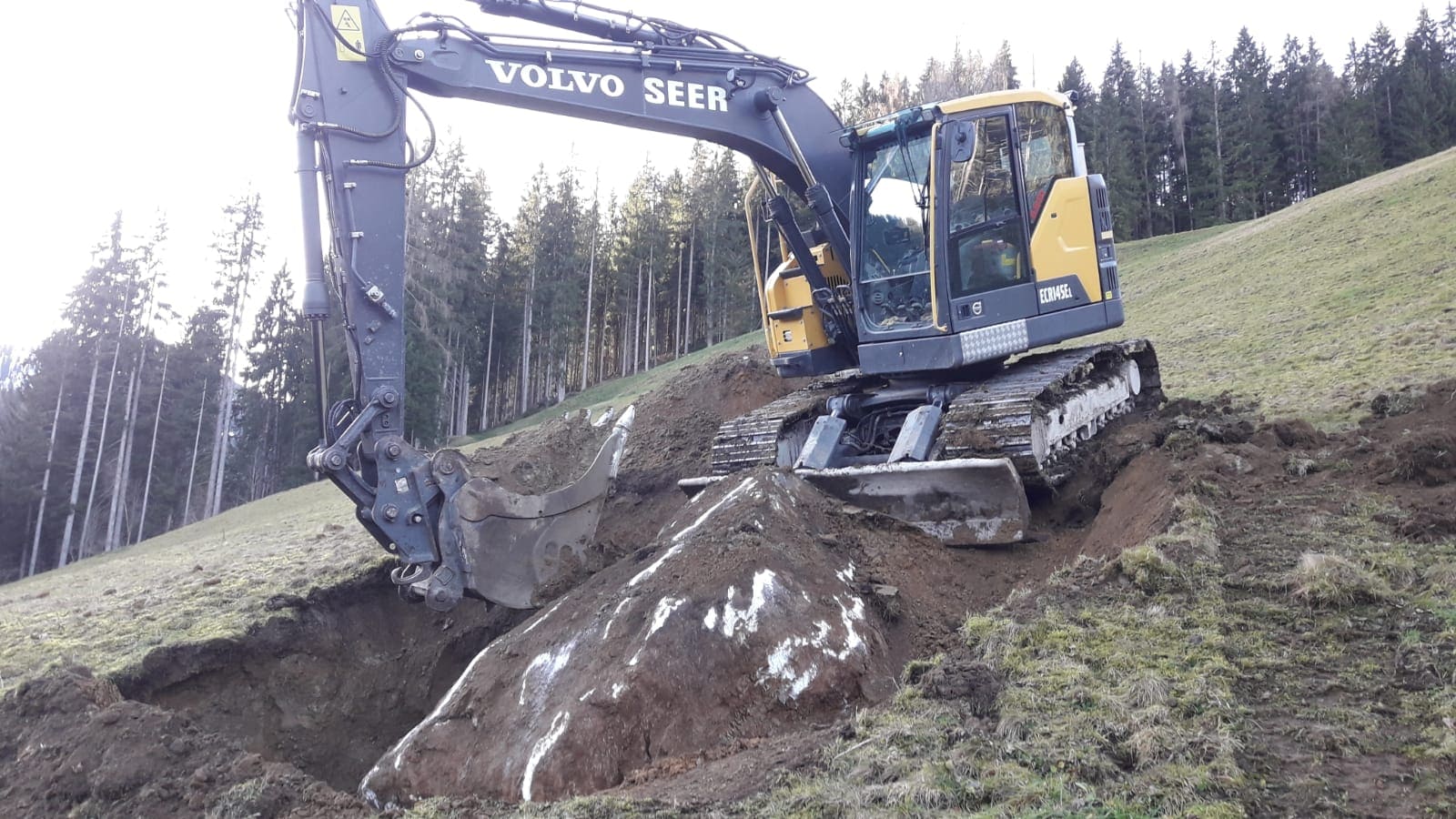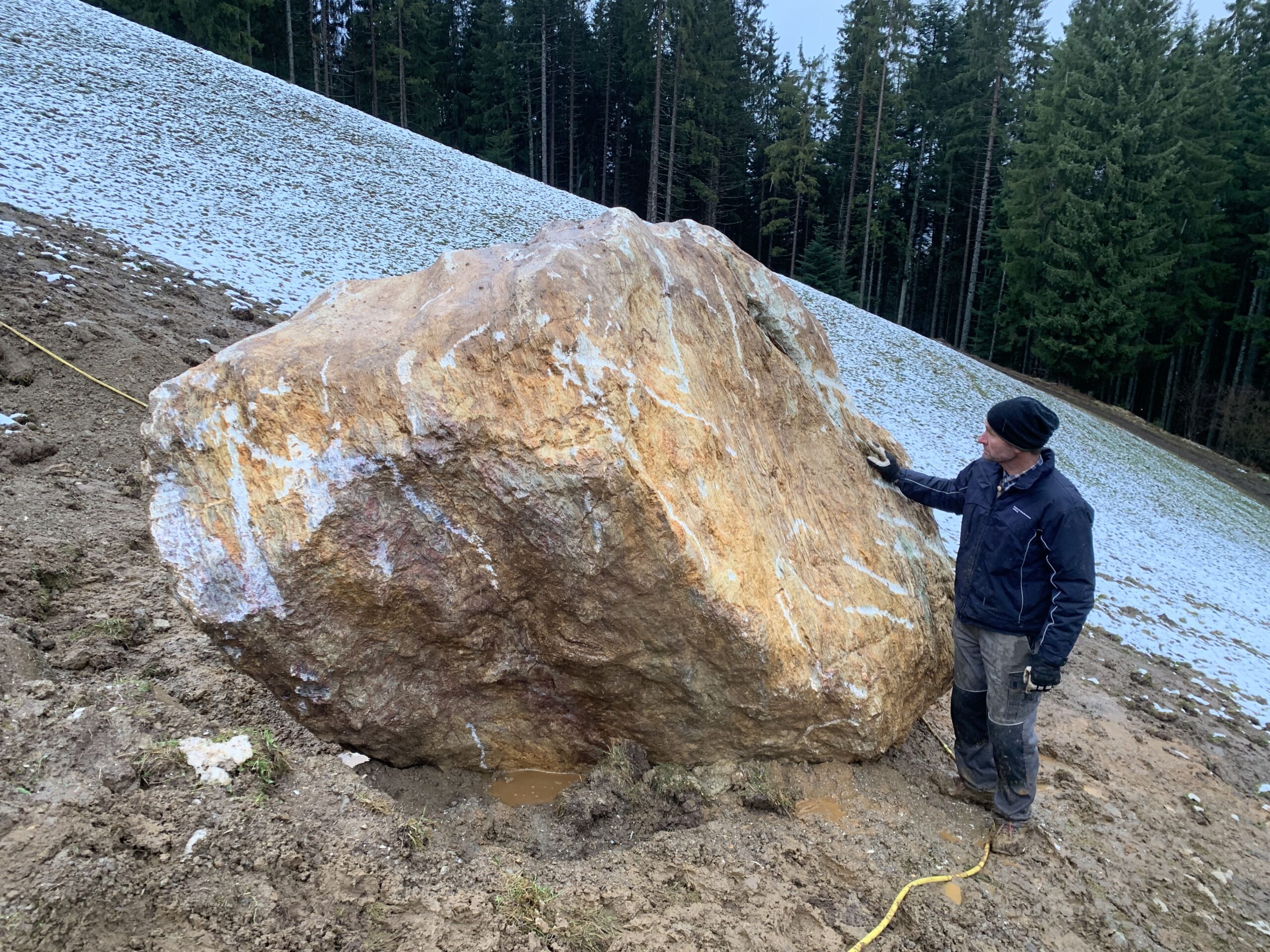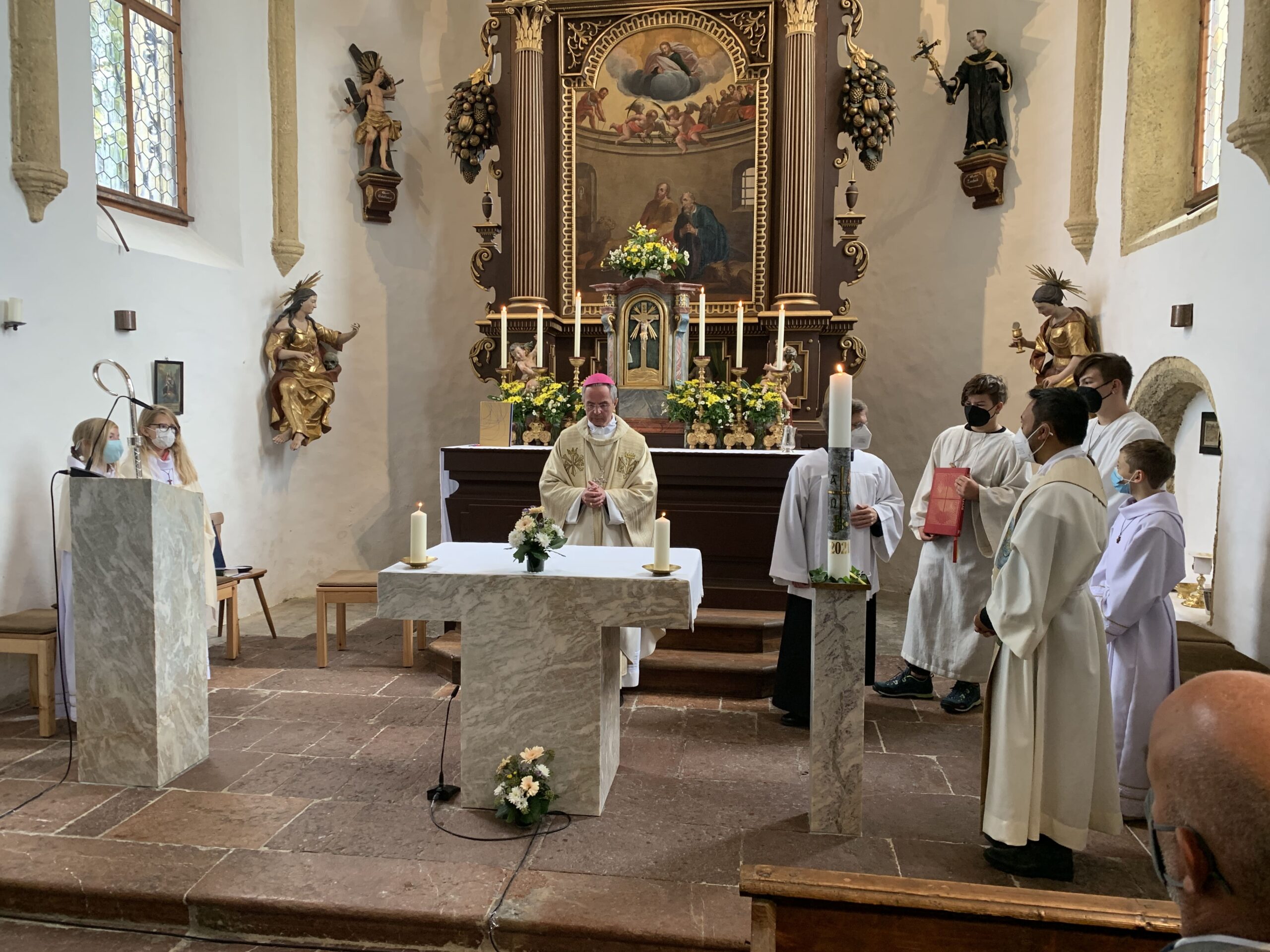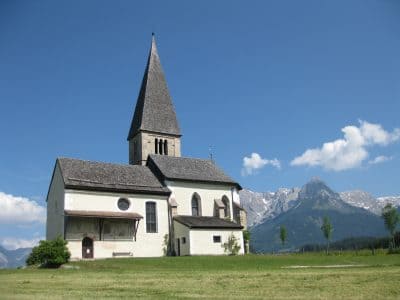Altarstone of Buchberg Chuch
During the renovation of Buchberg Church
from 2015 to 2021, a new altar was needed.
Leonhard Stock, the farmer from Oberberg,
discovered a glacial erratic on his property
called „Arlstein.“ This approximately 35-
ton colossal rock initially protruded about
20 cm from the field on a 2 m² area. In
the fall of 2019, it was uncovered and
subsequently examined to determine
if an altar could be carved from the
block. Using drilling tools and expanding
agents, the block was dismantled in a
way that allowed for a high degree of
artistic freedom in shaping the form and
appearance for the altar design.
The stone originates from the Greywacke
Zone, primarily composed of light marble
interspersed with bands of magnesite and
dolomite, and is approximately 420 million
years old. The stone was embedded in
fine-grained (sandy-gravelly) glacial
deposits and is believed to have been
transported several kilometers by the
glacier before being left behind during the
glacier‘s melting. It remained undiscovered
for several millennia until Leonhard Stock
eventually identified it as a glacial erratic
or „Findling.“
Kids
The treasure of the Buchberg
Centuries ago, men from the south came to the Salzach and settled on the Buchberg for a while. They hunted game, tanned the hides and amassed real treasures, much to the annoyance of the farmers. One day it was too much for the farmers, they chased the men away, captured one of them and locked him up in a dark rock cellar. Here the man found golden ore, which he extracted with great difficulty and guarded well until one day he was released.
He later exchanged this gold for a veritable treasure trove of silver and wanted to reward the farmers with it if they would help him extract more of the gold ore.
When he returned to the forest on the Buchberg, one of the farmers saw him and hit him over the head with a club, causing the man to die shortly afterwards. The farmer examined his belongings and found one thousand silver coins in his luggage. He buried the coins in the forest so that no one would find out about his sudden wealth. However, on his way home he fell into a deep hole and died miserably as punishment for his misdeed.
Centuries later, in 1985, Mrs Hermine Ransmayr came across this silver treasure while foraging for mushrooms, which used to be on display in the museum at the Kastenturm in Bischofshofen.
Mrs Ransmayer and her husband found 800 silver coins from the Middle Ages during the hike. These coins are Friesacher Pfenning, which were probably already an important means of payment from 1125/30. The coins come from mints in Salzburg, Friesach and Passau belonging to Salzburg Archbishop Eberhardt II (1200 - 1246). On the obverse, the bishop can be recognised with his cross-ceptor and the oath hand. The coin is framed by a pewter wall and two towers. On the reverse you can recognise an angel with a barrel of salt and a hand of blessing. It is still not clear how the coins found their way to Bischofshofen on the Buchberg.




